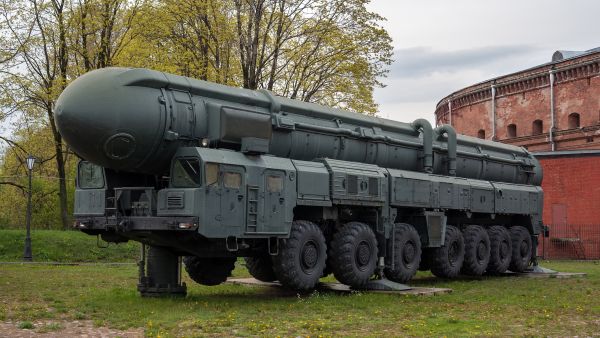The ongoing conflict between Russia and Ukraine reached a dangerous new level this week. Russia announced the use of a powerful new missile called the Oreshnik, which it claims is nearly impossible to intercept. The missile was launched during a recent strike on the Ukrainian city of Dnipro, creating a major escalation in the war.
Unstoppable Missile Introduced by Russia
In a televised announcement, Russia revealed its new hypersonic missile, the Oreshnik. This missile reportedly travels ten times faster than the speed of sound. According to Russian officials, it is designed to evade air defense systems. The recent strike on Dnipro highlighted the missile’s destructive power. Witnesses reported explosions that lasted for hours. Ukrainian officials believe one of the missiles used resembled an intercontinental ballistic missile (ICBM).
Russia stated that the use of the Oreshnik was a response to Ukraine’s deployment of Western-supplied missiles. These included Storm Shadow missiles from the UK and Atacms missiles from the US. The introduction of this weapon adds a new layer of complexity to the conflict.
Ukraine Seeks Stronger Defenses
Ukraine has responded by asking for upgraded air defense systems from its Western allies. Officials are seeking advanced equipment like the US Terminal High Altitude Area Defense (THAAD) and improvements to existing Patriot systems. These defenses are critical as Ukraine faces increasingly sophisticated missile threats from Russia.
The Ukrainian government emphasized the need for international support to counter Russia’s advancements. They urged countries to step up their military aid to help Ukraine protect its people and infrastructure.
Global Leaders Issue Warnings
The escalation has drawn sharp reactions from leaders worldwide. Concerns are growing that the conflict could expand into a larger, more dangerous confrontation. Some leaders warned of a potential global crisis if the war continues to escalate unchecked.
Countries neighboring Ukraine, like Poland, have expressed serious concerns. The situation has prompted discussions about the role of military alliances and the need for united action. Some nations, however, have cautioned against taking Russia’s threats lightly.
North Korea’s Involvement Raises Alarms
The conflict has also drawn support for Russia from unexpected places. Reports indicate North Korea has sent thousands of troops to assist Russian forces. Ukrainian soldiers have reported clashes with North Korean fighters in areas near the Russian border. This development has raised international fears about the growing involvement of foreign powers. Observers believe North Korea’s participation could intensify the war further.
Western Allies Respond with Advanced Weapons
In response to Russia’s actions, the United States has approved Ukraine’s use of long-range Atacms missiles. These missiles are now being used to strike targets deep within Russian territory. This marks a significant shift in the scope of the conflict. Ukraine has vowed to continue its fight and has called for more support from its allies. The country sees advanced weaponry as essential to maintaining its resistance.
War’s Global Impact
The war is having ripple effects around the world. Some countries in the Global South and regions like Asia have urged restraint. However, critics argue that such calls may not deter Russia’s aggressive actions.
At home, Ukraine’s leadership is urging its citizens to remain resilient. They have asked workers and officials to stay committed to their duties despite the ongoing threats. The government is emphasising the importance of unity and focus during these challenging times.
What Lies Ahead?
The introduction of Russia’s advanced missiles and the growing involvement of other countries have made the situation increasingly volatile. With both sides seeking an upper hand, the risks of further escalation remain high. The conflict is not just about territory; it has become a test of military strategies and international alliances.
The world continues to watch closely as this war enters another critical phase. The actions of global leaders and their responses to these developments could shape the future of the conflict.

